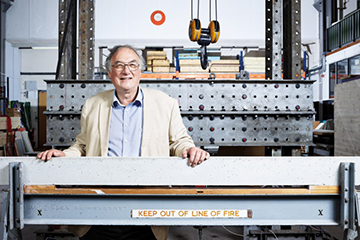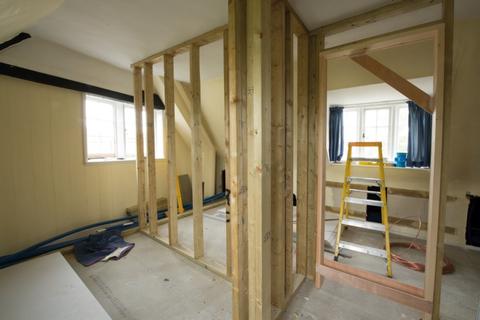Chris Burgoyne – Concrete and Bone: Life as a Structural Engineer
Structural engineering is sometimes described as the Second Oldest Profession; the human race has been building homes and bridges from time immemorial.

While the Greeks rested large stones across the top of tall columns, the Romans knew about arches and made something remarkably close to modern concrete. However, even if they had known about structural theory, doing arithmetic in Roman numerals would have been impossible, so science was beyond them and buildings were constructed using the principles of proportion until the Renaissance. By the time of the Brunels and the Stephensons, most of the guiding principles had been understood. So what is left to study?
If I had been forced to live in the real world, I would have been a bridge engineer. Bridges are amongst the purest form of engineering: the idea that form follows function, with the shape of the bridge dictated by the flow of forces, usually leads to elegant design. Architects are not needed, although they often claim credit; their role in bridges is merely to decide what colour to paint the lamp posts.
Bridge engineering led me to the study of prestressed concrete. Concrete is strong in compression but cracks under tension, so by running a cable through it and compressing the ends of the concrete together, much higher loads can be carried. The structure is lighter and more elegant, and is usually more durable. But its use is not for the faint-hearted: prestressing tendons are the most highly stressed structural elements anywhere, being routinely stressed to 70 per cent of their breaking load, and they require the use of high-strength concrete.
Concrete is often seen as a utilitarian material but is actually very complex: if you order a lorry load from a ready-mix company it will have a strength of about 40 MPa (Mega Pascals), but I have tested concrete taken from real buildings with a strength of 2 MPa and in the lab we can make concrete with a strength of 200 MPa. Chemists wouldn’t be able to tell these mixes apart and it would take an electron microscope to be able to see the difference between them. The design of prestressed concrete pushes the engineer to the limit; for most materials it is sufficient to say that the structure is strong enough, but with prestressed concrete designers are faced with upper as well as lower limits,and they need to take account of things such as creep deformation and parasitic forces that are induced by the tendons themselves.
Early in my academic career I was asked if I wanted to work on plastic prestressing tendons. ‘How strong are they?’: ‘20 grammes per denier’. Twenty grammes seemed very small and what I knew about denier had nothing to do with engineering. But when you do the maths you find the material is ten times stronger than normal steel and nearly as stiff. It was the aramid fibre, Kevlar. We asked the manufacturer for their long-term data and they sent a chart that went up to four hours, so I phoned them to say they had sent the wrong chart. ‘Buddy, we make bullet-proof vests and rocket nozzles: four hours is an eternity’; not, though, for the engineer where a structure erected in the 1960s is regarded as ‘new’. This led to a whole new career for me, investigating the long-term properties of these materials, to the extent that we now know at least as much as the fibre manufacturers.
High-strength fibres have many uses, for example they allow bridges to be constructed with very long spans. The world’s longest bridge (in Japan) currently has a 2 km main span and the recently cancelled bridge at Messina would have had a 3.5 km span, which would have been at the limit for steel cables. There are several places where 5 km spans are needed (Norway, Japan) but which are impossible at present.
My work on fibres has led to my involvement in the SPICE project (Stratospheric Particle Injection for Climate Engineering). This assumes that we (the voters) will not allow the politicians to do enough to prevent the Earth’s temperature from rising by more than 2°C, so we will need to cool the planet by reflecting back sunlight before it heats the earth. With colleagues in SPICE, I am working on a proposal to fly a balloon 20 km high in the stratosphere from which particles could be pumped. The design of the tether is a challenge because it would have to support its own weight and the bursting force from the liquid being pumped; only materials like aramid fibres will work.
In complete contrast, I have recently been working on the mechanics of bone, where we have been looking at the structural mechanics of trabecular bone within the femoral neck. Bone remodels itself to suit the loads it carries, so in the elderly, and especially those with osteoporosis (usually women), the femoral neck loses its ability to withstand impact from a sideways fall, leading to hip fracture. It is a fruitful field of research because most medics are not taught physics, and most engineers aren’t taught biology, but this is an area in which both aspects need to be properly understood.


